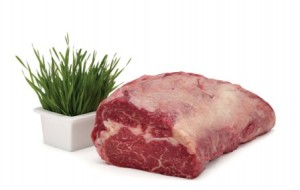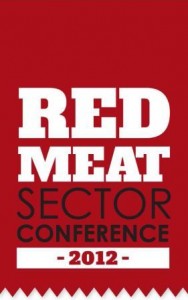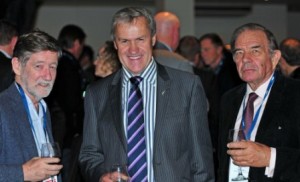 Nearly a quarter of a billion dollars is being invested by the meat industry and the government in projects aimed at adding a potential $3 billion to returns over the next decade.
Nearly a quarter of a billion dollars is being invested by the meat industry and the government in projects aimed at adding a potential $3 billion to returns over the next decade.
Ministry for Primary Industries (MPI)’s director-general Wayne McNee took the opportunity at the Red Meat Sector Conference to announce approved funding for the latest Primary Growth Partnership programme, which will enable the production of high-value marbled grass-fed New Zealand beef for premium export and domestic markets.
The initiative will develop marbling in grass-fed beef in the New Zealand beef herd, using Wagyu beef genetics, McNee explained. “MPI will invest in this programme with Brownrigg Agriculture and Firstlight Foods. The PGP is committing $11 million over seven years, for a programme worth a total of $23.7 million.”
 Marbling, the distribution of fat through meat, is a primary determinant of quality in table beef in international markets such as Japan, China and the United States. Internationally, such high quality beef is produced mainly from cattle housed in pens and fed grain. ANZCO Foods has been producing a supply of hand-selected steers for Japan, raised on grass but finished on Canterbury grain at the Five Star beef feedlot near Ashburton for over 20 years.
Marbling, the distribution of fat through meat, is a primary determinant of quality in table beef in international markets such as Japan, China and the United States. Internationally, such high quality beef is produced mainly from cattle housed in pens and fed grain. ANZCO Foods has been producing a supply of hand-selected steers for Japan, raised on grass but finished on Canterbury grain at the Five Star beef feedlot near Ashburton for over 20 years.
To produce a comparable meat fed using New Zealand grass, the new PGP programme is aiming to develop an integrated value chain for the beef. It will combine high marbling Wagyu sires for the yearly mating of dairy heifers and cows and the development of rearing and grazing systems that will support year-round growth of the cattle.
McNee said the programme aligns well with the Red Meat Sector Strategy.
“The programme will produce unique New Zealand high-value beef for discerning consumers. It will link specialists in dairy farming, cattle breeding, finishing, processing and marketing and deliver market signals effectively right through the value chain,” he said.
David Brownrigg of Brownrigg Agriculture says it will be a significant opportunity for beef and dairy farmers to lift the quality and value of their calves and finished cattle.
“The New Zealand dairy sector represents an under-utilised resource for producing quality beef calves. Brownrigg’s Wagyu crossed with ‘Kiwi’ dairy cows and Angus beef cows will produce outstanding beef and help us lift our game in international markets,” according to Brownrigg.
 Gerard Hickey, managing director of Firstlight Foods says a planned marketing programme to selected high-end global consumers will enable beef farmers to build their businesses with confidence.
Gerard Hickey, managing director of Firstlight Foods says a planned marketing programme to selected high-end global consumers will enable beef farmers to build their businesses with confidence.
Minister welcomes announcement
Welcoming the announcement, Minister for Primary Industries David Carter says, “The Government’s total investment so far of more than quarter of a billion dollars in PGP programmes, demonstrates its firm commitment to boosting economic growth through primary sector research and innovation.
“All New Zealanders stand to gain from the partnership because, alongside our internationally prized lamb, our beef sector is pivotal to the success of our economy.”
The announcement lifts the total government-industry PGP spend over the past three years to nearly $600 million. Nearly $86 million of government PGP funding has been allocated to three meat industry projects worth a total of nearly a quarter of a billion dollars to date. These are estimated to potentially put over $3 billion more on the country’s GDP by the mid-2020s.
To date, PGP-supported meat projects include funding of up to $59.5 million over seven years for the $151 million Farm IQ project with partners Silver Fern Farms, PGG Wrightson and Landcorp Farming aimed at creating a demand-driven integrated value chain for red meat. Seven project streams and 18 sub-projects are working to improve the capture and utilisation of both market and farm production information. The information will then support the development of new value-driven genetics and extension work that underpin the programme.
Another $36.6 million PGP project with NZ Merino, including $15.15 million of PGP funding, is looking to develop merino sheep with meat, wool and other products suitable for market demands over the next seven years.
Also in the wings, is a project that has been approved to business plan stage and will potentially to be funded to the tune of $37 million, led and matched by funds from Beef + Lamb NZ Ltd focused on implementing a number on-farm elements of the Red Meat Sector Strategy. Other meat industry projects are also in the pipeline, according to MPI.
The PGP is expected to be fully subscribed by next year, says McNee.
An abridged version of this article appeared in Food NZ magazine (August/September 2012).


